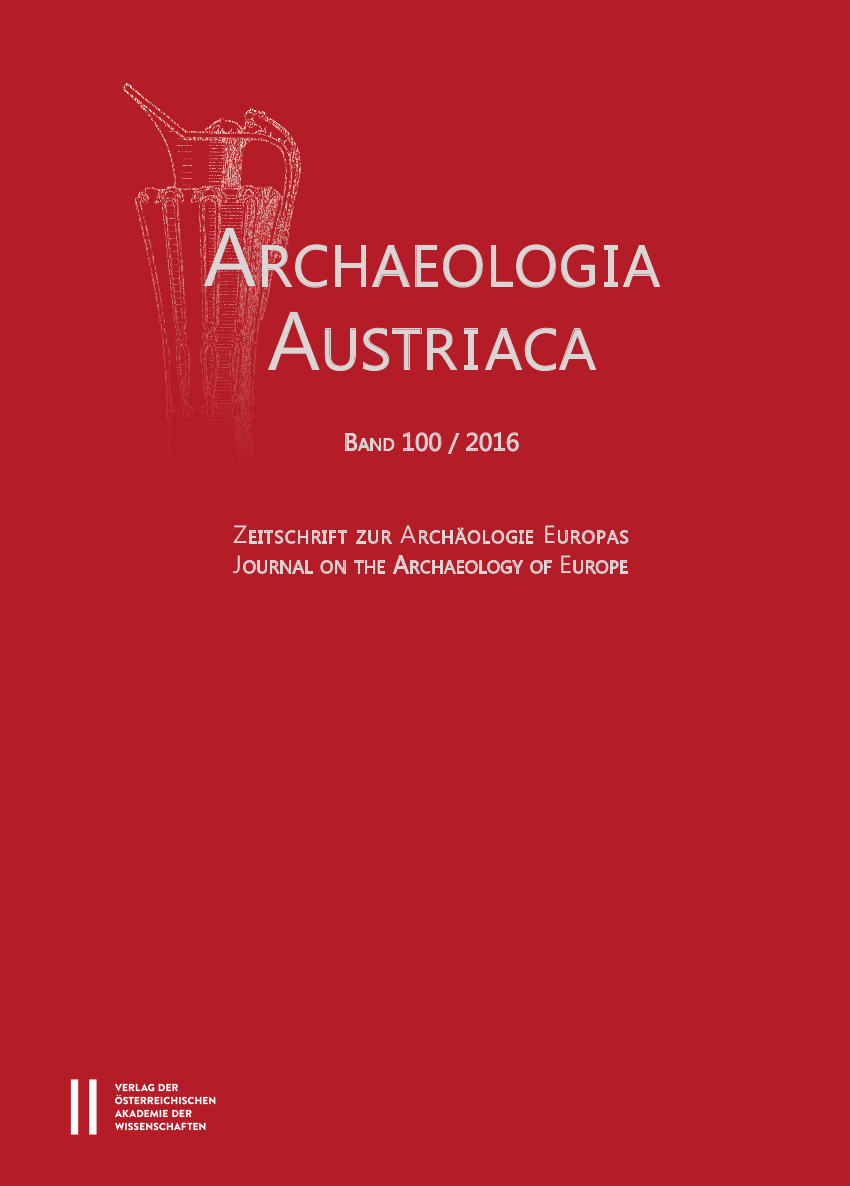|
 |
Barbara Horejs, Estella Weiss-Krejci
Die 100. Archaeologia Austriaca. Rückblick und Vorschau /
Archaeologia Austriaca for the 100th Time. Retrospect and a
Look Ahead – 7
Artikel / Articles
Ernst Pernicka, Joachim Lutz, Thomas Stöllner
Bronze Age Copper Produced at Mitterberg, Austria, and its
Distribution – 19
Ernst Pernicka, Bianka Nessel, Mathias Mehofer, Elvira
Safta
Lead Isotope Analyses of Metal Objects from the Apa Hoard
and Other Early and Middle Bronze Age Items from Romania
– 57
Mario Gavranović, Mathias Mehofer
with contributions by Aleksandar Jašarević, Ajla Sejfuli
Local Forms and Regional Distributions. Metallurgical Analysis
of Late Bronze Age Objects from Bosnia – 87
Zdravko Tsintsov, Nadia Petrova, Mathias Mehofer
Ancient Gold Mining at Ada Tepe, East Rhodopes, Bulgaria.
Mineralogical Features of Au-Containing Fe-Oxides/Hydroxides
from the Ada Tepe Gold Deposit. Their Significance in
Clarifying the Ancient Gold Mining – 109
Michael Brandl, Christoph Hauzenberger, Maria M.
Martinez, Peter Filzmoser, Dagmara H. Werra
The Application of the Multi-Layered Chert Sourcing Approach
(MLA) for the Characterisation and Differentiation of ‘Chocolate
Silicites’ from the Holy Cross Mountains, South-Central
Poland – 119
Appendix A. Supplementary LA-ICP-MS data – ONLINE
http://epub.oeaw.ac.at/archaeologia100/Supplement_
Brandl_et_alii
Michaela Lochner, Daniela Kern
Josef Höbarths „Feldfruchthütte“. Zur Aussagekraft von Altfunden
am Beispiel der urnenfelderzeitlichen Höhensiedlung
Thunau am Kamp, Niederösterreich – 151
Appendix A. Digitaler Text-Bild-Katalog der Funde der
Sammlung Höbarth aus der Höhensiedlung von Thunau am
Kamp in den Museen der Stadt Horn – ONLINE
http://epub.oeaw.ac.at/archaeologia100/digital_
catalogue_Lochner_Kern
Simona Marchesini
Die Rolle der Schrift in Selbstwahrnehmung und Identitätskonstitution
bei antiken Völkern. Das Beispiel des rätischen
Gebiets (Jüngere Alpine Eisenzeit) – 189
Roland Filzwieser, Wolfgang Neubauer, Erich Nau, Leopold
Toriser
Archäologische Untersuchung einer neuzeitlichen Klause am
Falkenstein bei Sankt Gilgen, Salzburg – 199
Themenspecial / Special Section
Der spätpaläolithische Fundort Kammern-Grubgraben / The
Late Palaeolithic Site of Kammern-Grubgraben
Christine Neugebauer-Maresch, Thomas Einwögerer,
Jürgen Richter, Andreas Maier, Shumon T. Hussain
Kammern-Grubgraben. Neue Erkenntnisse zu den Grabungen
1985−1994 – 225
Paul Haesaerts, Freddy Damblon
The Late Palaeolithic Site of Kammern-Grubgraben (Lower
Austria). Additional Data on Loess Stratigraphy and Palaeoenvironment
– 255
Paul Haesaerts, Freddy Damblon, Christine Neugebauer-
Maresch, Thomas Einwögerer
Radiocarbon Chronology of the Late Palaeolithic Loess Site of
Kammern-Grubgraben (Lower Austria) – 271
Rezensionen / Reviews
|
